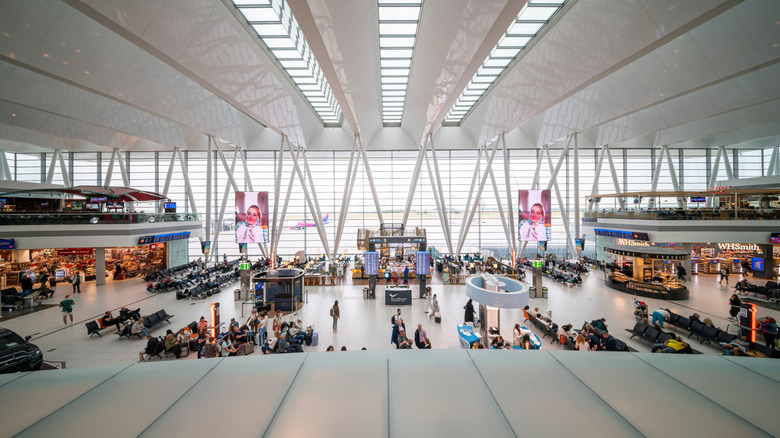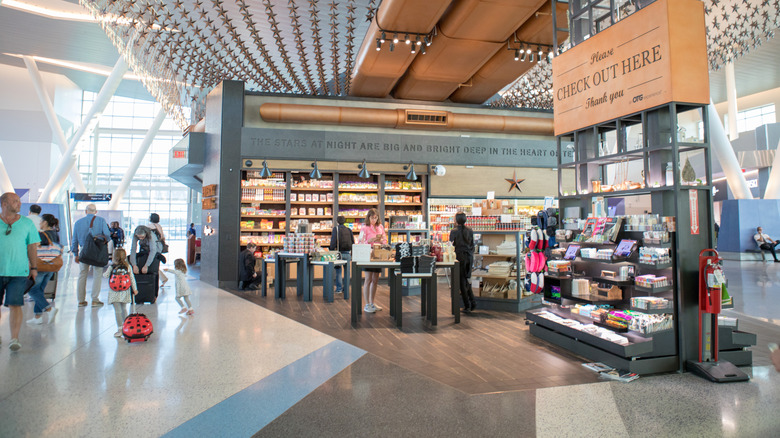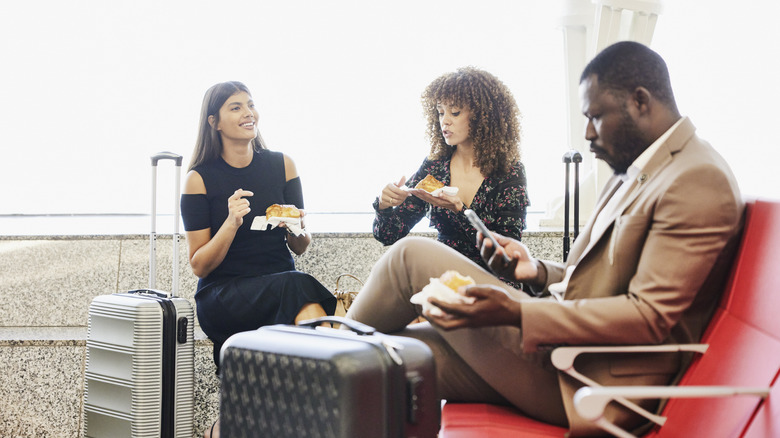The Annoying Reason Why Airport Food Is Off-The-Charts Expensive
We've all been there — standing in the fast food line at an airport, one of the first questions that runs through your mind isn't centered on the meal you'll choose. Instead, travelers all too often find themselves wondering why they're forking over $20 or more for a burger that would cost half the price anywhere else. The experience you'll 'enjoy' in an airport is often a mixed bag. There's the natural euphoria that comes along with vacation travel, and a marked level of anticipation that can be uplifting or even exciting when traveling for work. But the task of getting from one place to another isn't always straightforward or comfortable. Airports and their airlines have been deploying sneaky tactics to get you to spend more money for years. In many ways, an airport acts like a shopping mall. More to the point, it's long been thought that the suggestion of arriving two or more hours before your flight is really just a conspiracy of sorts designed to get travelers to spend more while they wait.
There's a theme here, and airport restaurant options certainly get in on the action by raising their prices to match other inflated costs. Yet, there's a bevy of reasons why a meal within the secure zones of an airport will hurt your wallet more than its alternatives elsewhere — like higher operational costs and limited competition. These key factors influence airport food prices and are notably absent from even identical restaurants that might be found just outside the terminal facilities.
Logistics can be a nightmare in this high-security environment
Perhaps the most important difference between a restaurant within an airport and one that's found elsewhere is the logistical hurdles involved in stocking the location. For example, the amount a typical McDonald's franchise owner makes annually is around $150,000, and for that slim profit they must work closely with the supplier to ensure that they have enough burger patties and every other menu item ahead of each new day. The logistics involved in moving even paper cups and napkins can be complex, and that's before considering the refrigerated and frozen ingredients that must be shipped to the brand's kitchens.
Delivery plans become far more involved when the location in question is found behind a security cordon. Deliveries can easily be slowed or even delayed as a result of added security checks. 'Airside' restaurants and retail outlets frequently earn more than merchants found outside of the secure areas, but they also experience plenty of challenges. Added security can slow things down, but these restaurants also tend to have less storage space to work with, making their own ordering and stock management logistics a constant point of intense focus.
High rental costs and booming employee turnover make margins a major point of contention
While gross profits can often be higher among these restaurants, there's a lot more to consider before passing judgement. In most cases, a restaurant owner won't own the property their food is served in. Renting the storefront is a better approach for numerous reasons, including financial mobility. For franchisees, this may be the only way to go about launching a new business. Returning once again to the example of McDonald's, the corporate entity has ballooned into one of the largest real estate investment firms in the world, with more than $28 billion in real estate assets under its control. The company owns roughly 70% of the buildings that its franchise locations operate from.
Whether you're looking at the Golden Arches or any other restaurant, the rental cost for a location within an airport is frequently inflated. This means that prices are naturally adjusted to make up for the increased operational expense. Another important feature of the restaurant game is employee turnover. Hiring is a feature of any business, and without enough employees, a brand can't function. Within the airport environment, new hires must be vetted thoroughly in order to work within the secure area. Added security checks and other restrictions quickly pile up, making these jobs less enviable for those in the market for a new gig.
The captive audience skews any notion of free-flowing supply and demand
One final feature of the airport food experience cuts right to the heart of the consumer relationship. The laws of supply and demand are fairly straightforward, but this standard means of understanding basic pricing goes out the window in a place like an airport. Rather than acting as a typical consumer space, airports are a self-contained arena. Supply and demand is skewed here because travelers are locked into the setting. Airline passengers are often hungrier than they would be otherwise. The travel experience isn't exactly conducive to maintaining a normal eating and drinking routine. Coupled with the restrictions on bringing things like full water bottles through the security line, there's a general need to pay for more food items than you would elsewhere.
Restaurants know that they have a hungry and largely 'stuck' customer base. Because many of their costs are inflated and they enjoy an artificially increased level of demand, these businesses boost their prices to offset additional expenses and earn more. Estimates place the typical airport restaurant meal at about 10% more expensive than is equivalent on the other side of the TSA buffer, but this can vary based on the restaurant in question and by location.



